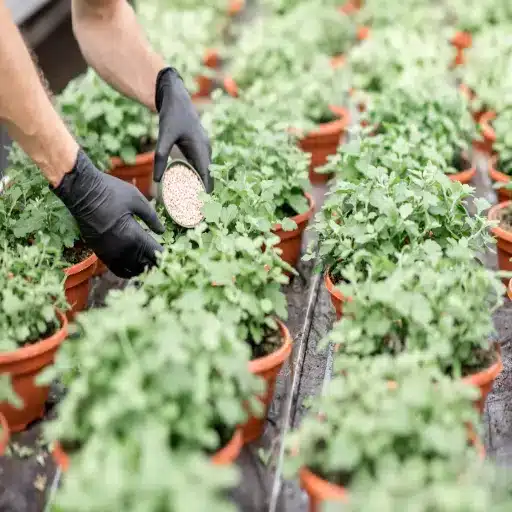Magnesium sulfate, commonly known as Epsom salt, is a versatile compound for gardening and caring for plants. It supplies important elements, such as magnesium and sulphur necessary for plant growth and development. Moreover, it enhances nutrient uptake, leading to strong plants. In this paper, we will discuss the countless advantages of adding Epsom salt to your gardening routine, including tips on appropriate usage to optimize plant performance. Readers will learn about the right practices when using it with ideal plants and some misconceptions recorded over time about this famous gardening improvement. Having this information at hand, gardeners of all levels would be able to maximize their landscaping efforts using Epsom salts in their gardens, which produce beautiful green gardens.
Understanding Epsom Salt in Gardening
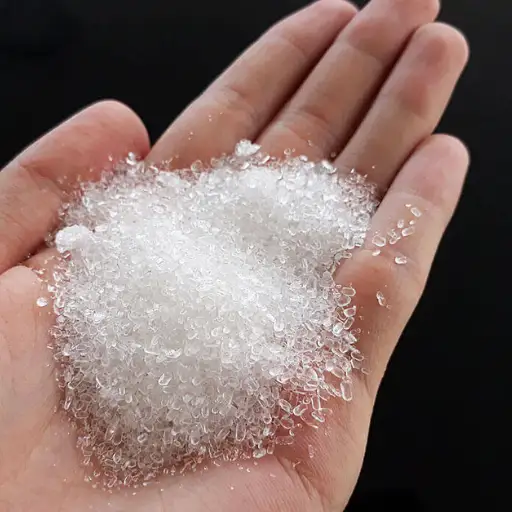
Plant physiology is largely dependent on Epsom salt, which is magnesium (Mg), Sulphur (S), and oxygen (O). Magnesium is important for producing chlorophyll, but it doesn’t enable photosynthesis, while sulfur is part and parcel of amino acids, vital in the formation of proteins in plants. When used as directed, apply Epsom salts at a rate of one tablespoon (15 grams) per gallon of water every 4-6 weeks during active growth. Plants like tomatoes, peppers and roses require more magnesium to avoid deficiency symptoms such as leaf yellowing, stunted growth and reduced flowering. It is essential that when using Epsom salts, soil pH should be between 6.0 and 6.8 for optimum nutrient availability; excessively acidic or alkaline soils may impair nutrient uptake, thus reducing the effectiveness of Epsom salts in general.
How Epsom Salt Differs from Other Fertilizers
Epsom salt could be differentiated from other conventional fertilizers by being a pure mineral source made up of magnesium and sulfur rather than macro/micro blending. Unlike most NPK fertilizers, which mainly concentrate on the three main macronutrients needed by plants for their growth, Epsom salt provides additional secondary nutrients that are very important for better-functioning plants.
In contrast to NPK fertilizers, which foster basic processes like root development or flowering, thereby fostering good-condition plantations at large-scale farming levels, this supplement directly contributes to chlorophyll production, resulting in higher photosynthetic efficiency within crops. In chlorophyll formation magnesium plays an indispensable role as each molecule contains a single central magnesium ion. Additionally, sulfur participates in the synthesis of essential amino acids required to build proteins, which are crucial for plant structure as well as enzymatic processes.
The following are the technical parameters that justify the use of Epsom salt:
- Magnesium Content: Typically, Epsom salts contain 9.8% magnesium by weight, which can correct magnesium deficiencies seen in plants especially magnesium-hungry varieties.
- Sulfur Content: It also has approximately 13% sulfur, which aids in formation of amino acids and overall plant metabolism.
- Soil pH: Soil pH must be maintained between 6.0 and 6.8 as mentioned before; anything outside this range will cause nutrient lock-up making both Epsom salts and traditional fertilizers ineffective.
By focusing on these specific nutrient contributions and their interactions within the plant system, Epsom salt is an invaluable supplement that complements standard fertilisation practices rather than replacing them.
Why Magnesium and Sulfur Matter for Plants
The growth, development, and general health of plants depend on two important nutrients, namely, magnesium and sulfur.
Magnesium is a vital part of chlorophylls (pigment responsible for photosynthesis) that enables a plant to convert sunlight into energy. In its absence, enzymes cannot be activated to support diverse biochemical reactions. If tissues turn yellow between veins this may indicate chlorosis due to lack of enough magnesium required by photosynthesis. The technical parameters that justify the importance of magnesium include the following:
- Chlorophyll Synthesis: Photosynthesis is impossible without magnesium because every chlorophyll molecule contains one ion (magnesium).
- Enzyme Activation: Over 300 enzyme systems, including those involved in carbohydrate metabolism, require Mg2+ as a cofactor (magnesium).
However, sulfur is important for synthesizing essential amino acids that form proteins. In addition, this nutrient is connected to the biosynthesis of a number of valuable secondary metabolites like flavonoids and glucosinolates, which are responsible for plant protection and nutrition in general. The technical parameters that define the importance of sulphur are:
- Amino Acid Formation: Sulphur plays a role in this process by helping produce amino acids such as cysteine and methionine which are needed in protein synthesis and metabolic control.
- Metabolic Processes: Sulfur impacts the production of other plant compounds that can improve stress resistance and overall well-being.
In conclusion, both elements have a direct impact on key physiological processes through their inherent roles within metabolic pathways; furthermore, they assist plants in maintaining structural integrity, increase vigor as well as protect various environmental stresses towards better health status and productivity.
Benefits of Epsom Salt for Your Garden
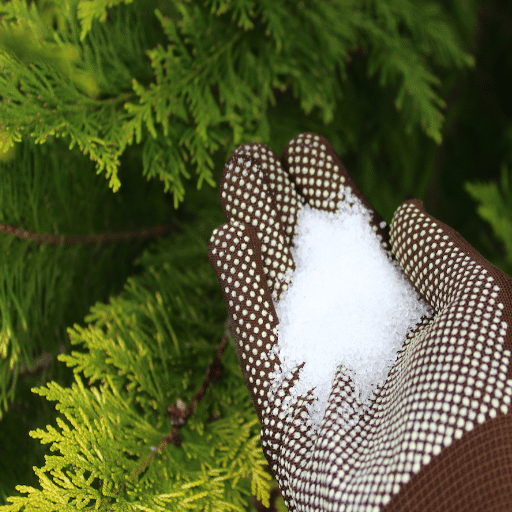
Various benefits exist for garden health in Epsom salt, mainly a magnesium sulfate compound. It increases the synthesis of chlorophyll because it is rich in magnesium, thus improving photosynthesis and leading to greener foliage. In addition, Epsom salt also enhances nutrient uptake, especially phosphorus and nitrogen which are important for plant growth and flowering. Amino acids and proteins that form the principal components of plants’ structure are synthesized by sulfates. Another benefit of this salt is its capability to retain water in soil, hence making plants more resistant to drought conditions. Not only does it stimulate root development but regular application also leads to better yields of fruits and vegetables, thus making it a useful supplement for any garden.
Enhanced Nutrient Absorption in Plants
Enhanced nutrient absorption in plants is a critical factor affecting their growth and well-being. Several factors influence this biological process as well as the environment where plants grow. One such factor is root architecture, which provides an extensive root system, thereby allowing greater surface area available for efficient nutrient absorption. Mycorrhizal fungi develop symbiotic relationships with plant roots, leading to improved nutrient uptake, particularly phosphorous, while increasing water-holding capacity as well. Apart from this, soil pH also has an important role whereby optimal pH range increase solubility of essential nutrients making them available to plants. Moreover, there should be enough moisture within the soil matrix because through dissolution and transport nutrients can be taken up by or leached out of plant tissues at optimal levels.It also matters when applying fertilizers or organic amendments; how they are applied together with when they are put into the garden affects their availability for use by growing crops during their life cycles.
Improved Seed Germination
There exist different environmental conditions or treatments that enhance the chances of successful seed germination over others.Key ones include temperature effects on seed variables like moisture content as well as light intensity, all triggering germination processes. The cold treatment used when stratifying seeds for breaking dormancy mainly in many perennials. Pre-soaking the seeds also aids water absorption and, therefore, reduces germination time greatly. Additionally, applying plant growth regulators could enhance germination by affecting hormonal activity within the seed. Furthermore, soil quality has to be optimized in terms of nutrient content and pH levels to support early root development and ensure that there is adequate nutrient uptake after germination.Monitoring these conditions regularly can significantly improve the germination rate thereby supporting successful plant growth.
Amplifying Flowering and Fruit Production
Amplifying flowering and fruit production in plants necessitates an integrated approach that includes proper environmental circumstances, nutrition management and crop husbandry. The right balance of macronutrients, especially nitrogen, phosphorus, and potassium, is important; phosphorus especially plays a critical role in flower and fruit development. Adopting appropriate watering regimes and mulching are some of the ways to maintain soil moisture levels, which in turn support the physiological processes underlying flowering. Pruning is another important practice that enhances air movement around flowers by light penetration thus enhancing their formation. Additionally, fertilizers should be applied at the appropriate time with respect to plant’s reproductive phases so that essential nutrients can be available when required exactly. Pest and disease management measures should also be put in place because healthy plants tend to produce flowers as well as fruits consistently. Lastly, the utilization of specific flower-inducing plant growth regulators can stimulate flowering strategically for different species, hence increasing yield potential.
Choosing the Right Plants for Epsom Salt

When looking at the use of Epsom salt (magnesium sulfate) as a soil amendment, it is necessary to identify plants that can benefit significantly from its application. Tomatoes, peppers and roses are three such candidates. These plants enjoy higher levels of magnesium due to growth that arises from increased chlorophyll production and nutrient uptake by Epsom salt. For tomatoes and peppers, this means enhanced growth and fruit quality, while roses experience an increase in flowering intensity and overall health. Besides, it’s important to know that Epsom salt is beneficial for leafy green vegetables like spinach and lettuce because magnesium improves foliage quality. Thus, for optimal nutrient balance results, Epsom salt should be used judicially, normally dissolved in water before applying it, following soil testing outputs.
Best Plants for Applying Epsom Salt
- Tomatoes: Magnesium becomes crucial when it comes to chlorophyll production, which depends on the supply of calcium to lead to improved growth and greater fruiting quantity. If you apply it regularly, this can assure high yields with better disease resistance.
- Peppers: Like tomatoes, peppers also gain extra magnesium from Epson salts. This fosters healthy plant development and leads to more vibrant fruit coloration and improved taste.
- Roses: Epsom salt is highly beneficial for roses because they require luxurious blooms and a vigorous overall plant status. Consequently, magnesium helps make chlorophyll, which improves roses’ healthiness and flowering capacity.
- Leafy Greens: Leafy greens particularly spinach and lettuce respond favorably when applied with Epson salt. Magnesium optimizes the condition of the leaves ensuring they are lush enough for nutrition purposes but also aesthetically satisfying.
- Basil: If Epson salts are sprinkled on basil plants, they develop thicker leaves with improved flavor. This promotes growth and increases the plant’s essential oil production, which is beneficial, especially for food preparation.
- Cabbage: Epsom salts enhance nutrient uptake and promote overall head development in cabbage varieties. It also prevents leaves from turning yellow since it has magnesium that encourages robust growth.
- Cucumbers: Applying Epson salts to cucumber plants can increase growth and flowering while enhancing fruit quality, resulting in crispy and more flavored harvests.
Indicators That Your Plant Could Benefit from Epsom Salt
There are various visual signs that show your plants may benefit from the use of Epson salt.
- Chlorosis: if a plant has yellow leaves, especially older foliage, then it might be showing low levels of magnesium. Magnesium is needed by plants during chlorophyll synthesis failure, to which photosynthesis is impaired and hence retards growth. Magnesium deficiency symptoms can be alleviated using an Epsom salt solution as it provides an immediate source of magnesium.
- Poor Fruit Development; Deformed or dull fruit may mean that certain nutrients such as sulfur or magnesium were not properly formulated in the soil for growing flowers like tomatoes or peppers. Fruit quality can be improved through easier nutrient intake in the soil via the presence of epson salts making fruits grow better with tastier produce.
- Weak Growth and Stunted Plants: Poorly performing, small-leaved, or generally unhealthy-looking plants may benefit from treatment with Epson salts. Activation of some enzymes responsible for plant growth and development requires magnesium; hence, its role becomes crucial. Thus, Epsom salt application stimulates cell division leading a stronger healthier plant as well as increasing growth hormones which improve cell multiplication rates resulting into healthier young seedlings& stronger ones when applied as a foliar spray
A common way to effectively use Epsom salt is to mix about 1 tablespoon with a gallon of water for foliar spray or drenching the soil. This amount supplies enough magnesium without causing nutrient burn, thereby allowing essential plant elements to be used for health and optimal productivity.
Can All Plants Tolerate Epsom Salt?
From my personal experience, even though many plants can benefit from Epsom salt because they contain magnesium, it is important to remember that not all plants tolerate it well. Some species may be negatively affected by the addition of soluble salts, especially those adapted to the low-nutrient surroundings. For instance, succulents and cacti are known to prefer drier conditions hence may result in leaf burn or nutritional imbalance when exposed to Epsom salt treatment. Therefore, before adding Epsom salt care, I advise one to perform a soil test as well as find out what specific requirements the plant has so as to ensure that Epsom salt would be a good add-on.
Proper Application Techniques
The following tips may be used for effective Epsom salt application. First, dissolve a tablespoon of Epsom salts in a gallon of water for foliar applications and directly spray onto the leaves early morning or late in the evening to minimize evaporation and increase absorption. It is important to ensure complete coverage of all leaf surfaces to enhance efficacy.
Secondly, while using Epsom salt as soil drenching, it should be incorporated into the soil at base of plants. The process can be achieved by taking 1 tablespoon per gallon mixed with water directly applied to the soil around the plant to aid root uptake. Overuse of Epsom salt must be avoided because it can harm certain types such as sensitive plant species. As such, in most cases, a small amount applied once a month during the growing season is preferable.
Finally, monitoring plant response to post-application is vital. Based on observed growth patterns and overall plant health, adjust frequency and concentration to achieve balanced nutrient profiles without over-fertilizing. Additionally, magnesium levels may be monitored through regular soil testing for guidance on optimum application strategies.
When and How to Apply Epsom Salt
Timing and technique are vital considerations when applying Epsom salt for optimal results in plant care. The recommended time for application corresponds with the growth season, which mainly happens between spring and summer when plants could benefit from additional nutrients inputted into their systems. Either before planting or while growing, one can apply Epsom salts to maximize their essence.
To get better results apply epsom salt either early morning or late evenings thereby reducing evaporation and thus more absorption during these cooler periods but then how do you mix this? When mixing up a fungicide solution containing Epsom salts, you’re advised to use about 1 tablespoonful per gallon of your favorite liquid concentrate, whether you’re creating foliar sprays/drenches.So with tomatoes, peppers, roses, and other related plants, it is important to use Epsom salt on them every four to six weeks. Plant response must be carefully watched over, with adjustments in frequency or concentration made according to observed growth and overall health, ensuring that the approach taken toward nutrient management remains balanced.
Foliar Sprays vs. Soil Application
Foliar sprays and soil application are two different ways to use Epsom salt in plant care; each has its own pros and cons. Nutrients delivered through foliar sprays are instantly absorbed by leaves, resulting in a rapid impact on the plant’s health within hours. Foliar applications help resolve nutritional imbalances, particularly when leaves are able to quickly take up magnesium for better photosynthesis and improved growth. Moreover, leaf curl or blossom end rot may also be controlled in some crops by means of foliar applications.
On the contrary, soil application allows nutrients from Magnesium Sulphate Heptahydrate (Epsom Salts) solubilized at root zones to seep slowly into the crop bed thus supporting a steady flow of nutrition as plants grow bigger. This method increases soil magnesium levels over time, which complements other nutrients necessary for proper plant functioning. Although soil application may take longer for plants to respond, it tends to favor strong root development, hence leading to healthy, more robust plants.
In summary, either foliar sprays or soil application can be used depending on a plant’s specific nutrient needs during particular growth stages. Combining both methods judiciously can optimize nutrient uptake and ensure that plants receive the necessary magnesium for optimal health.
Dosage Instructions for Different Plant Species
When I need to know the right dosage of Epsom salt for different plant species, I refer to a few leading horticultural sources. Like, most sources recommend using about 1-2 tablespoons of Epsom salt per gallon of water as a foliar spray applied every four to six weeks during the growing season. Such concentration can be useful in boosting magnesium levels without causing leaf burn.
For soil application, it is generally recommended that 1 tablespoon of Epsom salt should be mixed into each square foot of soil just before planting. This rate ensures that enough magnesium is available for root establishment while at the same time avoiding possible nutrient imbalances. When plants such as tomatoes and peppers are heavy feeders, they may require an increase in dosage up to two tablespoonfuls per square foot especially if deficiencies in magnesium exist within the soils. These prescriptions are informed by comprehensive reviews of site-specific situations as well as nutritional demands among an array of plant types.
These recommendations depend on careful examination of site-specific conditions and can also apply to an array of different plants with different growth stages and nutritional requirements. The correct dosing depends on knowing what stages each plant type is in its life cycle and what nutrients those plants require. One way this may be done is through conducting soil tests specifically meant for determining magnesium levels; these tests ensure that the correct measures are utilized so that optimum health for these organisms, along with normal growth rates, can happen according to plan.
Common Misconceptions About Epsom Salt
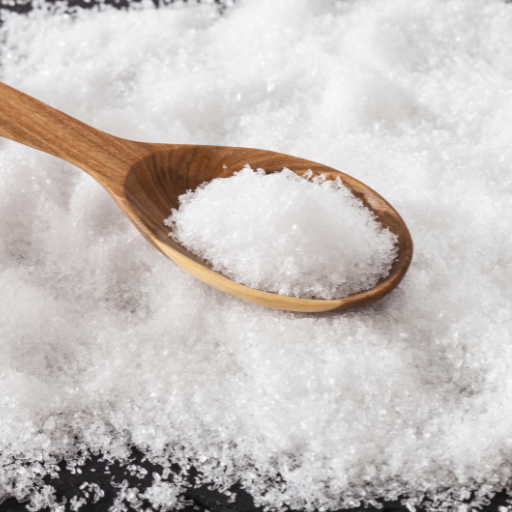
There is a misconception among people that Epsom salt is a universal remedy for all types of mineral deficiency in plants. Although it provides magnesium, not all cultivars need more magnesium; in fact, excesses lead to nutrient imbalances. Moreover, some gardeners hold the opinion that you can replace a complete fertilizer with Epsom salt but the research demonstrates that it should be used as a supplement to a comprehensive nutrient regimen rather than an independent solution. Finally, there is the common belief that Epsom salt increases yields across all crops. In cases where this happens in magnesium-deficient environments, it may enhance certain growth aspects; however relying too much on Epsom salt without addressing other essential nutrients will not assure better plant performance.
Can Overuse of Epsom Salt Harm Plants?
When used excessively, Espon salts can cause serious damage to plants through nutritional imbalances and detrimental physiological effects. The main danger related to excessive magnesium use is that it inhibits the uptake of other vital nutrients, especially calcium and potassium. For instance, studies indicate that if magnesium levels exceed about 0.3%—0.5% of total soil composition, uptake of potassium may be negatively affected. This leads to potassium deficiencies, which are essential for various plant functions, including water regulation and photosynthesis.
Additionally, excess Mg can compact soils and impede root development by reducing soil porosity. Sometimes, soil pH balance could also get distorted because higher amounts of Mg may raise soil pH, creating favorable conditions for specific pathogens’ growth.
In practice, applications from past experiences, with such aspects as soil tests before application, become important in order not to exceed recommended threshold levels for Magnesium content. Hence, good usage of Epson salt should mostly target particular plant deficiencies, ranging from a basic dose not exceeding one tablespoon per gallon in regular application and only as an additive with other fertilizers so as to maintain nutrient equilibrium.
Comparing Epsom Salt with Traditional Fertilizers
It is important to compare Epsom salt and traditional fertilizers in terms of their composition, mode of action, and method of use. Conventional fertilizers usually supply a balanced range of macronutrients indispensable for plant growth: nitrogen (N), phosphorus (P), and potassium (K). For instance, a common NPK ratio like 10-10-10 signifies equal parts of these nutrients, which are vital for the overall health of plants.
On the contrary, Epsom salt, otherwise known as magnesium sulfate (MgSO4), specifically addresses magnesium deficiencies while providing sulfate, which enhances nutrient uptake and chlorophyll production. The technical parameters associated with Epsom salt include a magnesium content of about 9.8% and a sulfate content of approximately 13%, making it particularly beneficial for crops like tomatoes and peppers that thrive on increased magnesium levels.
Traditional fertilizers come with guidelines for application rates based on soil type and plant requirements, often recommending around 1 pound of N per 1000 square feet for optimal results. On the other hand, Epsom salt should be applied with caution to avoid surpassing the recommended limit of one tablespoon per gallon of water, as excessive use can disrupt nutrient balance, harming plants. While Epsom salt excels in boosting magnesium levels compared to other fertilizers, conventional fertilizers remain essential for providing a well-rounded nutrient profile crucial for robust plant growth.
Troubleshooting and Observations
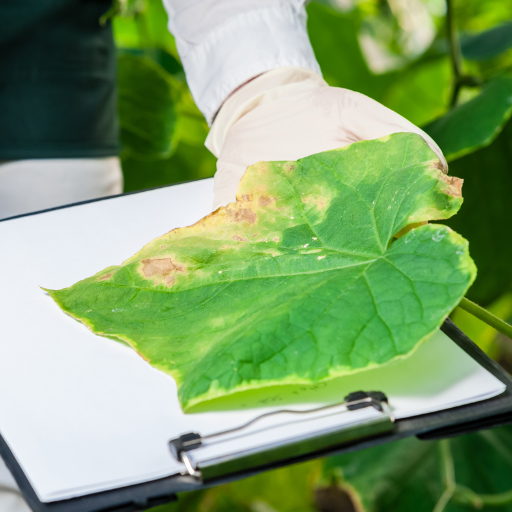
To troubleshoot plant nutrient deficiencies, it is vital to correctly diagnose the signs of plants. Indications such as leaf yellowing, dwarfism or poor flowering may arise from shortages in nitrogen, magnesium and other essential nutrients. Consultation with authoritative horticultural sources indicated that soil testing is the most accurate method for gauging nutrient levels. By performing these tests specific deficiencies can be identified thus guiding appropriate fertilizer use. Moreover, preliminary assessment tools like examining leaf coloration and overall plant vigor through observational techniques are very important. Maintaining proper pH levels is also crucial because pH influences nutrient availability greatly. Most nutrients have their highest availability at a soil pH ranging between 6.0 to 7.0. Regular monitoring of environmental factors such as watering practices, and light exposure is also critical in preventing nutritional disorders; combining soil analysis with keen observation can facilitate targeted interventions aimed at enhancing plant health and productivity.
Recognizing Magnesium Deficiency in Plants
Typically, recognizing magnesium deficiency in plants involves looking for particular symptoms that result from the under-uptake of magnesium ions by plants. The most common symptoms include interveinal chlorosis where the areas between the veins of the leaves turn yellow while veins remain green which can be easily seen on older leaves. Also, affected plants show curled leaves or scalloped edges, while severe cases have necrosis leading to leaf drop-off as well. An accurate diagnosis requires a soil test to establish how much magnesium is there though incorporation of dolomitic lime or Epsom salt can solve any confirmed lack of magnesium through testing done prior to planting new crops again on such land. Performing this condition timely is important as it has direct effect on photosynthesis which depends on its availability for growth and yield of any crop.
What Changes Should You Expect When Applying Epsom Salt?
When using Epsom salt (magnesium sulfate), there are often immediate improvements observed after just a few days or weeks. The leaves usually start to lose the yellowish chlorotic color as magnesium levels are re-stabilized and, therefore, improve chlorophyll production. This can cause increased adaptive growth with stronger stems and better branching as the plants can actively photosynthesize. Furthermore, many gardeners claim that they experience an increase in fruit and flower yields because magnesium is a critical element for energy transfer within a plant. These changes act as a sure pointer on how effective the nutrient is and if the plant has fully recovered from it. However, Epsom salt application must be done together with a balanced fertilizer program for best results.
Adjust your Use of Epsom Salt for Plant Response
When changing Epsom salt use based on plant response, the amount of chlorophyll and the general health status of plants should be closely monitored immediately after the first treatment. If leaf color and growth improve, continue applying them in a monthly basis at 1 to 2 tablespoons per gallon of water. On the other hand, if no improvement is observed after some weeks, check soil conditions again and possibly perform further tests to identify hidden causes such as nutrient imbalance or wrong pH levels. This may lead to overuse of this fertilizer which often results in symptoms like burn out on leaves or retarded growth which implies that there is need to reduce or stop using epsom salt until it recovers. Changing how you are doing things based on what you see will let you maintain an optimal level of magnesium in plants, hence their good state, as well as increasing their yield capacity.
Reference sources
-
HGTV
- Source: HGTV
- Summary: This article explains that for new gardens, you should sprinkle one cup of Epsom salt per 100 square feet over the soil and mix it in before planting.
-
Trees.com
- Source: Trees.com
- Summary: The guide suggests mixing the required amount of Epsom salt with water and spraying it on the leaves of a plant, ideally in springtime as new growth begins.
-
Martha Stewart
- Source: Martha Stewart
- Summary: This article advises dissolving 1 tablespoon of Epsom salt in 1 gallon of water and applying it to your flowers to promote healthier growth.
Frequently Asked Questions (FAQs)
Q: What are the main benefits of using Epsom salt in gardening?
A: Epsom salt enhances nutrient absorption, improves seed germination, boosts flowering, and supports overall plant health by providing essential magnesium and sulfur.
Q: How should I apply Epsom salt to my plants?
A: You can apply Epsom salt by mixing it into the soil, using it as a foliar spray, or adding it to water for root absorption. The method depends on the plant’s needs.
Q: Which plants benefit most from Epsom salt?
A: Plants like tomatoes, peppers, roses, and houseplants often benefit from Epsom salt due to their higher magnesium requirements.
Q: Can I overuse Epsom salt on my plants?
A: Yes, overusing Epsom salt can lead to nutrient imbalances and potential harm to your plants. It’s important to follow recommended dosage guidelines.
Q: How can I tell if my plants need Epsom salt?
A: Signs of magnesium deficiency, such as yellowing leaves with green veins, may indicate a need for Epsom salt. However, it’s best to confirm with a soil test.
Q: Is Epsom salt suitable for all types of plants?
A: While many plants can benefit from Epsom salt, some may not require additional magnesium. Always consider the specific needs of your plants before applying.
Q: How often should I use Epsom salt in my garden?
A: Application frequency depends on the plant type and its magnesium needs. Generally, monthly applications during the growing season are sufficient.
Q: Can I use Epsom salt on indoor plants?
A: Yes, Epsom salt can be beneficial for indoor plants, especially those that show signs of magnesium deficiency. Use it sparingly to avoid over-fertilization.



